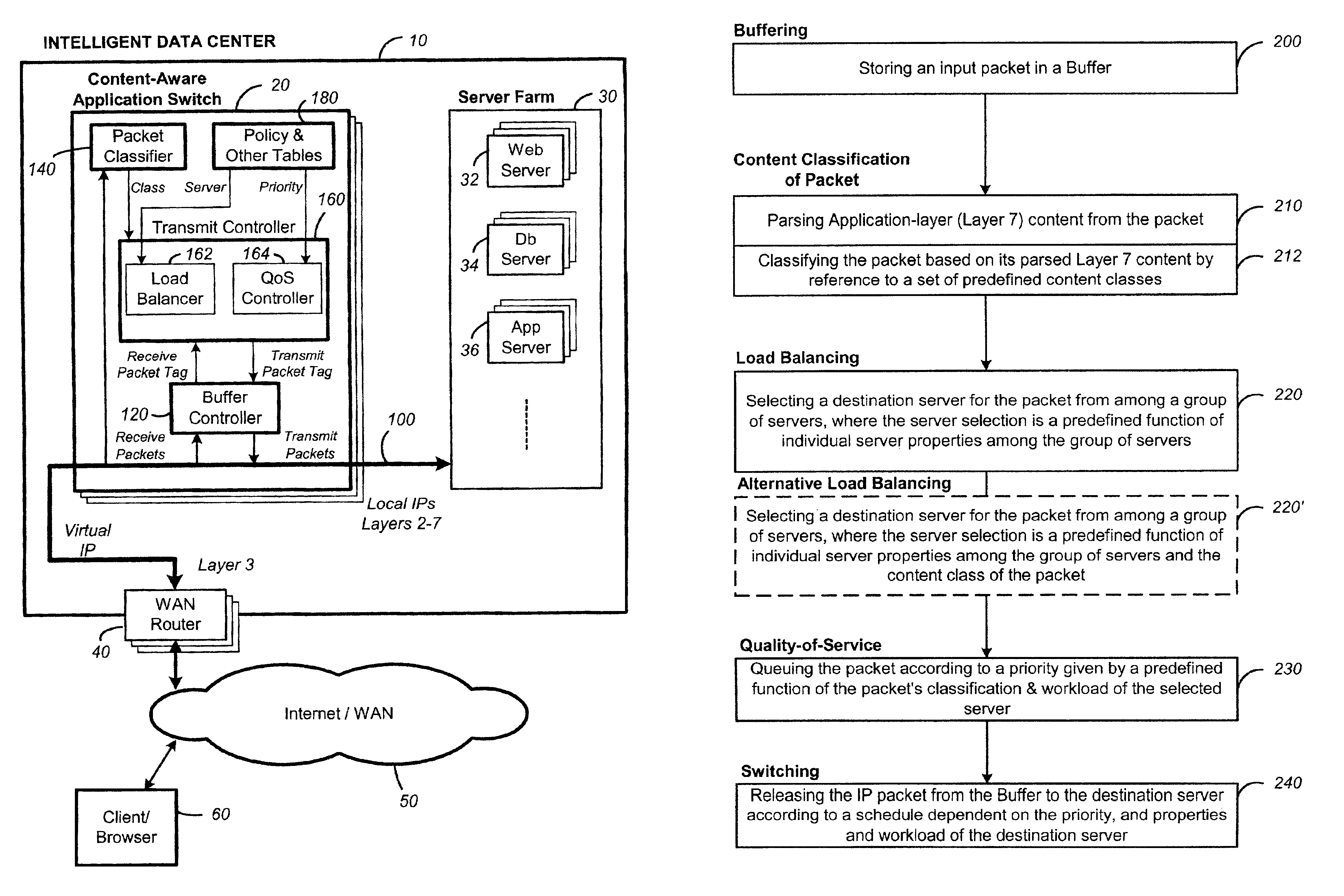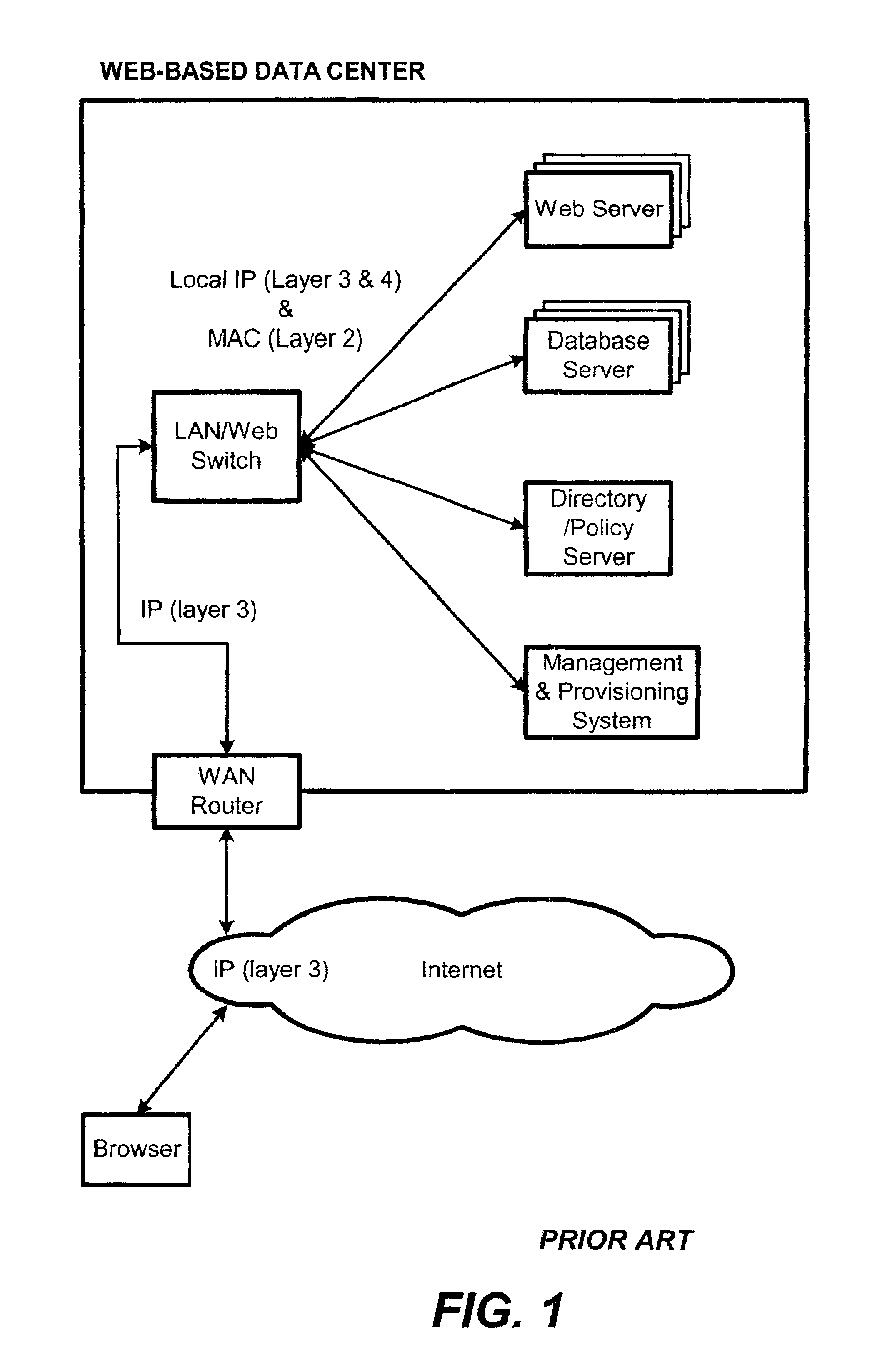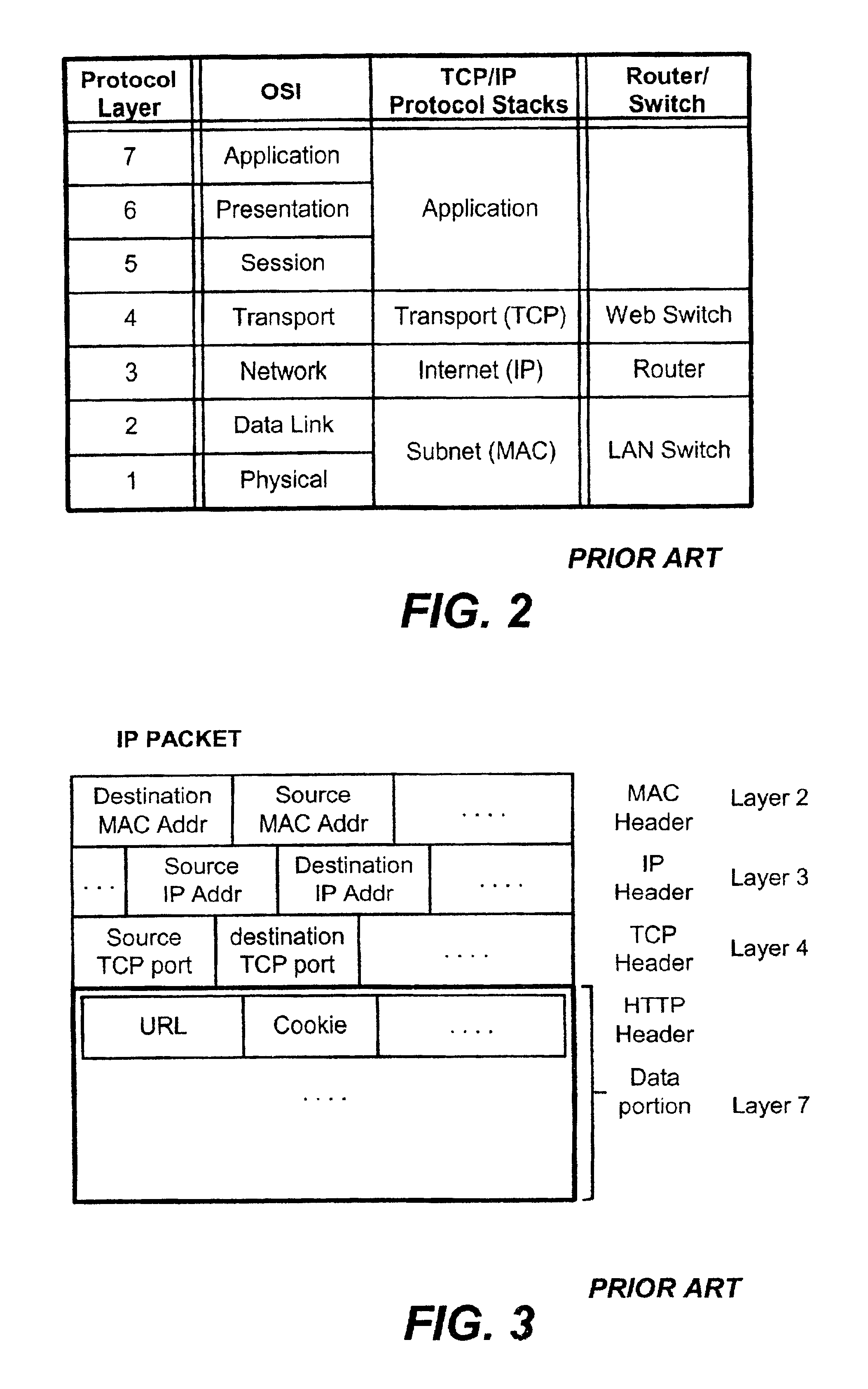Content-aware application switch and methods thereof
a content-aware application and server technology, applied in the field of content-aware application switching, can solve the problems of over-budgeted website capacity, high workload of online merchandising websites, and the need for the server hosting a web application to meet the potential huge demand from clients
- Summary
- Abstract
- Description
- Claims
- Application Information
AI Technical Summary
Benefits of technology
Problems solved by technology
Method used
Image
Examples
Embodiment Construction
Content-Aware Application Switch
[0052]According to one aspect of the present invention, a content-aware application switch enables switching a client packet to a server among a group of servers, where the selected server and the priority of the packet are dependent on the content carried in the packet.
[0053]FIG. 5 is a functional block diagram illustrating schematically a content-aware application switch operating in an intelligent data center, according to a preferred embodiment of the present invention. An intelligent data center 10 is implemented by the deployment of a content-aware application switch 20 to switch between servers in a server farm 30. The server farm 30 comprises a group of web servers 32 for hosting replicas of a web application to be deployed on the Internet 50. The server farm optionally includes other servers, such as database servers 34 and media servers 36 for providing resources that may augment or be required by the particular web application being deploye...
PUM
 Login to View More
Login to View More Abstract
Description
Claims
Application Information
 Login to View More
Login to View More - R&D
- Intellectual Property
- Life Sciences
- Materials
- Tech Scout
- Unparalleled Data Quality
- Higher Quality Content
- 60% Fewer Hallucinations
Browse by: Latest US Patents, China's latest patents, Technical Efficacy Thesaurus, Application Domain, Technology Topic, Popular Technical Reports.
© 2025 PatSnap. All rights reserved.Legal|Privacy policy|Modern Slavery Act Transparency Statement|Sitemap|About US| Contact US: help@patsnap.com



